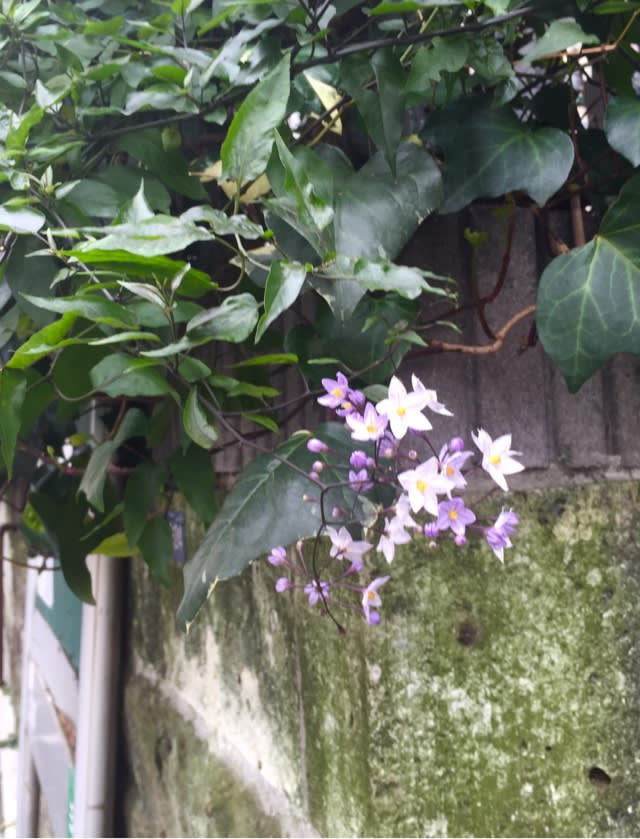
『文豪ナビ 夏目漱石』(新潮文庫編)が結構いけています。永井荷風、金子光晴ときて、次はいよいよ夏目漱石を読もうと思っています。その前に今、正岡子規(ちくま文庫)をリュックに入れて目を通しいますが、ちょっと寄り道がしたくなり、最近の若い人たち向けに、新潮社の文豪ナビシリーズが目にとまり、『先生ったら、超弩級のロマンティストなのね。夏目漱石』を読み終えました。そこで、恒例に従い「たばこの出てくる文章3点」と「その他4点」を抜き書きしてみました。そしたら、偶然にもいろいろ関連性があって、想像の翼がパタパタと羽ばたくような心地良さなのです。
《たばこの出てくる文章④点》
①【45ページ】10分で読む「要約」夏目漱石
「煙草もですね、朝日や、敷島をふかしていては幅がきかんです」と云いながら、多々良良平君は吸口に金箔のついた、埃及(エジプト)煙草を出して、すぱすぱ吸い出した。
②【61ページ】
宿の近くの鏡が池へ来て見る。余は草を茵(しとね)に太平の尻をそろりと卸した。袂(たもと)から烟草(たばこ)を出して、燐寸(マッチ)をシュッと擦る。
③【62ページ】
こんな所へ美しい女の浮いている所をかいたら、どうだろうと思いながら、又烟草を呑んで、ぼんやり考え込む。温泉場の御嬢さんの那美さんはどうか。あの顔を種にして、あの椿の下に浮かせて、上から椿を幾輪も落とす。それが画(え)でかせるたろうか。
④【90ページ】
小包郵便を載せた赤い車ごはっと電車と摺れ違うとき、又代助の頭の中に吸い込まれた。烟草屋の暖簾が赤かった。売出しの旗も赤かった。電柱が赤かった。赤ペンキの看板がそれから、それえと続いた。仕舞には世の中が真っ赤になった。
《その他3点》
①【120ページ】
牛込中央通りが朝日坂にぶつかったら左折、そして円福寺の手前で右折、その名の通り幅の狭い袖摺坂の階段を下りて大久保通りを渡ると、都営地下鉄大江戸線の牛込神楽坂駅がある。その横の坂を上り、道なりに左へ今度は下る。左に日本出版クラブ会館、右に光照寺がある。
②【130~131ページ】
----、ライバルの森鴎外が娘たちに茉莉・杏奴(まり・あんぬ)などというモダンな名前を付けたのと違って、漱石は筆子・恒子・栄子・愛子・ひな子などという平凡や名前を付けている。いかにも漱石らしい。『徒然草』にも、あるではないか。「珍しい趣向の名前をつけるのは、よくないことだ」、と。作家になってからも小説のタイトルに無頓着だったのは、漱石の抜きがたい性格だろう。
③【137ページ】
正岡子規の歿後、彼の俳句革新の志を継いで「ホトトギス」を主宰していた高浜虚子が、漱石に軽いノリの文章を書くことを強くすすめた。気分転換をはかれ、というアドバイスだ。これが、漱石の小説家としての第一歩となった。「ホトトギス」に『吾輩は猫である』が発表されたのが、明治38年1月。満38歳の年のこと。
The book "Bungo Navi: Natsume Soseki" (Shincho-Bunko Edition) is quite interesting.
I have finished reading Kafu Nagai and Mitsuharu Kaneko in the collection of writings, and I am finally going to read Soseki Natsume next.
Before that, I am currently reading through Masaoka Shiki (Chikuma Bunko) in my backpack, but I wanted to take a little detour.
Shinchosha's Bungo Navi series for young people these days caught my eye, and I read "Sensei, you are a super-romanticist, aren't you? I finished reading "Natsume Soseki.
So, as is my custom, I extracted "3 sentences in which cigarettes are mentioned" and "4 other sentences". I found that there were many coincidental connections, and it was a pleasant sensation as if the wings of my imagination were fluttering.
《Sentences in which cigarettes appear ④ Points
(1) [Page 45] 10-minute reading "Summary" by Soseki Natsume
The first thing that comes to my mind is that the first thing that comes to my mind is that the first thing that comes to my mind is that the first thing that comes to my mind is that the first thing that comes to my mind is that the first thing that comes to my mind is that I am a good person.
(2) [page 61].
I came to Kagamigaike Pond near the inn and looked. I put the grass on a pillow and pulled the buttocks of the cigarette out. He took out a cigarette from his pocket and rubbed a match with it.
(3) [page 62].
The first time I went to the hot spring, I saw a beautiful woman floating in the water, and I wondered what would happen if I saw her. How about Nami, the daughter of the hot springs resort? What about Nami, the daughter of the hot spring resort? Could that be the picture?
(4) [page 90].
When the red car carrying the parcel was passing by the train, it was sucked into Matayosuke's head. The curtain of the smoke shop was red. The sales banner was also red. The telephone poles were red. Red-painted signs followed, and so on. Finally, the whole world turned red.
Three other items
(1) [page 120].
When Ushigome Chuo Dori Street meets Asahizaka, turn left, then right before Enpukuji Temple, and as the name suggests, go down the stairs of the narrow Sodezuri slope and cross Okubo Dori to reach Ushigome Kagurazaka Station on the Toei Subway Oedo Line. Go up the hill next to the station and follow the street down to the left. The Nihon Shuppan Club Kaikan is on the left and Kosho-ji Temple is on the right.
(2) [pages 130-131].
---- Unlike his rival Mori Ogai, who gave his daughters modern names such as Mari and Anu, Soseki gave them ordinary names such as Fudeko, Tsuneko, Eiko, Aiko, and Hinako. This is very typical of Soseki. In "Tsurezuregusa," too, Soseki gave the same names as in "Tsurezuregusa," but with an unusual twist. It is not good to give a name with an unusual flavor," he wrote. Soseki's indifference to the titles of his novels, even after he became a writer, is probably due to his inimitable character.
(3) [page 137].
After Masaoka Shiki's death, Takahama Kyoshi, who presided over "Hototogisu," following in the footsteps of his haiku innovator, strongly advised Soseki to write light-hearted pieces. He advised Soseki to change his mood. This was Soseki's first step toward becoming a novelist. In January 1905, "I am a Cat" was published in "Hototogisu" at the age of 38. He was 38 years old.
 ▼今日、午後4時に仕事を終えて、満開の桜を期待し明治学院大学まで歩きました。結果は、桜の木が2本ほどしかなく残念でした。
▼今日、午後4時に仕事を終えて、満開の桜を期待し明治学院大学まで歩きました。結果は、桜の木が2本ほどしかなく残念でした。 ▼前回は、一服する時間がなかった喫煙室に、初めて入ってみました。やたらに広いのですが、何か地下室のような雰囲気で、ちょっと窮屈な感じがしました。
▼前回は、一服する時間がなかった喫煙室に、初めて入ってみました。やたらに広いのですが、何か地下室のような雰囲気で、ちょっと窮屈な感じがしました。
 JR田町駅西口の喫煙所が拡張されました。仕切りの植栽が追加され、スタンド灰皿も3台から5台に増えました。これまでの窮屈さが解消されました。
JR田町駅西口の喫煙所が拡張されました。仕切りの植栽が追加され、スタンド灰皿も3台から5台に増えました。これまでの窮屈さが解消されました。
 ▼この間、自宅で『金子光晴』(ちくま日本文学)の抜き書きをしながら、極細のポッキーを初めて食べてみました。
▼この間、自宅で『金子光晴』(ちくま日本文学)の抜き書きをしながら、極細のポッキーを初めて食べてみました。 《荷風東へゆく》小沢信男
《荷風東へゆく》小沢信男 《年譜》
《年譜》 ▼昨日の昼休み、明治学院大学まで足を延ばそうと思っていたのですが、出足が遅れ近場を散歩しました。
▼昨日の昼休み、明治学院大学まで足を延ばそうと思っていたのですが、出足が遅れ近場を散歩しました。 ▼慶応大学正門を右手に見て、左に曲がった安全寺坂の桜、坂を上り切って蛇坂を下った左手の桜、桜田通りに出てから幽霊坂を上る途中での花、締めは港区立亀塚公園の桜と桃の花でした。
▼慶応大学正門を右手に見て、左に曲がった安全寺坂の桜、坂を上り切って蛇坂を下った左手の桜、桜田通りに出てから幽霊坂を上る途中での花、締めは港区立亀塚公園の桜と桃の花でした。


 ▼私は、PEZというお菓子があることを、最近まで知りませんでしたが、カミさんは「小学校の頃が懐かしい!」と言いました。
▼私は、PEZというお菓子があることを、最近まで知りませんでしたが、カミさんは「小学校の頃が懐かしい!」と言いました。 ▼それとは知らず、以前、私はわが家のハムスターをトイレットペーパーの芯にくぐらせて、写真を撮ったことがありました。その時も、カミさんは「これはPEZだ!」と思ったそうですが、あえて言う必要性を感ぜずにいたそうです。世の中には知らないことが、本当に多いですね。
▼それとは知らず、以前、私はわが家のハムスターをトイレットペーパーの芯にくぐらせて、写真を撮ったことがありました。その時も、カミさんは「これはPEZだ!」と思ったそうですが、あえて言う必要性を感ぜずにいたそうです。世の中には知らないことが、本当に多いですね。 『花火』②
『花火』② 『花火』(大正8年7月)①
『花火』(大正8年7月)① 『文豪ナビ 夏目漱石』(新潮文庫編)が結構いけています。永井荷風、金子光晴ときて、次はいよいよ夏目漱石を読もうと思っています。その前に今、正岡子規(ちくま文庫)をリュックに入れて目を通しいますが、ちょっと寄り道がしたくなり、最近の若い人たち向けに、新潮社の文豪ナビシリーズが目にとまり、『先生ったら、超弩級のロマンティストなのね。夏目漱石』を読み終えました。そこで、恒例に従い「たばこの出てくる文章3点」と「その他4点」を抜き書きしてみました。そしたら、偶然にもいろいろ関連性があって、想像の翼がパタパタと羽ばたくような心地良さなのです。
『文豪ナビ 夏目漱石』(新潮文庫編)が結構いけています。永井荷風、金子光晴ときて、次はいよいよ夏目漱石を読もうと思っています。その前に今、正岡子規(ちくま文庫)をリュックに入れて目を通しいますが、ちょっと寄り道がしたくなり、最近の若い人たち向けに、新潮社の文豪ナビシリーズが目にとまり、『先生ったら、超弩級のロマンティストなのね。夏目漱石』を読み終えました。そこで、恒例に従い「たばこの出てくる文章3点」と「その他4点」を抜き書きしてみました。そしたら、偶然にもいろいろ関連性があって、想像の翼がパタパタと羽ばたくような心地良さなのです。 ▼一昨日、詩吟コンクール港区連大会でのランチは、「梅もと」のお弁当でした。その他、イチゴ3個、みかん1個を食べました。
▼一昨日、詩吟コンクール港区連大会でのランチは、「梅もと」のお弁当でした。その他、イチゴ3個、みかん1個を食べました。 ▼詩吟コンクールに出場した私は、実力のなさに加え、練習不足が重なって、コンクールに落ちました。残念と後悔。
▼詩吟コンクールに出場した私は、実力のなさに加え、練習不足が重なって、コンクールに落ちました。残念と後悔。



